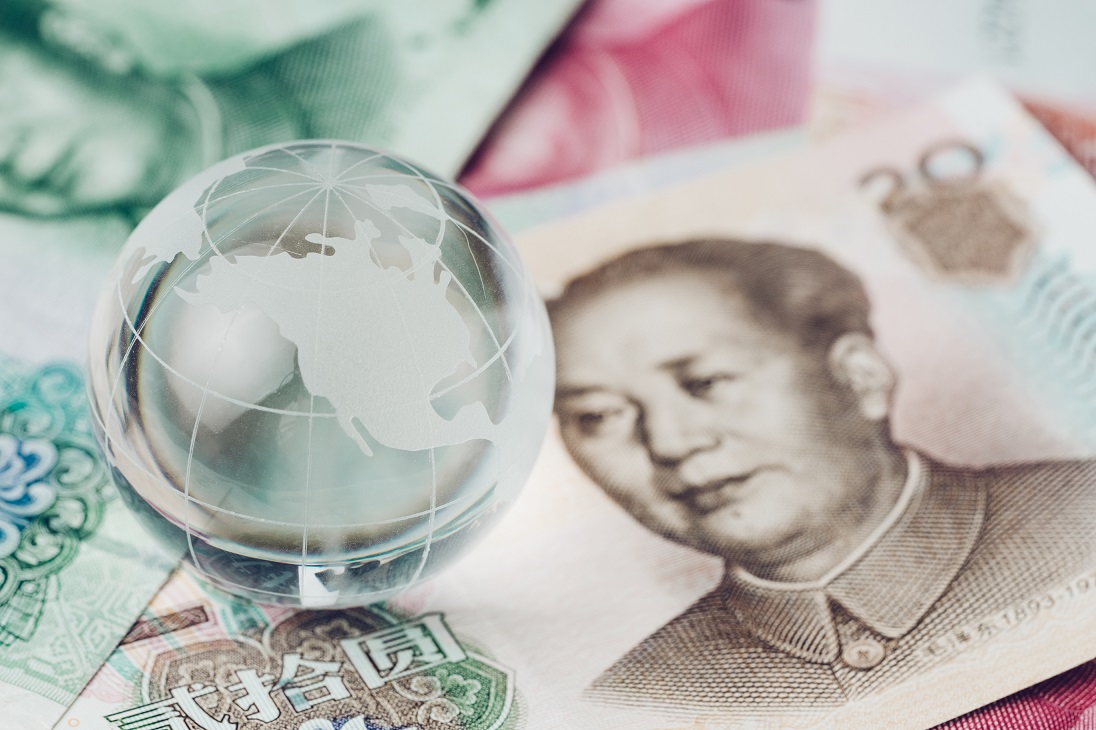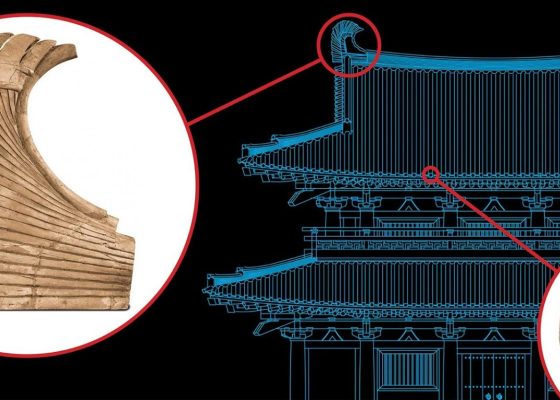
By Staff Middle Land
By Jefferson Weaver
There is a school of political theorists known as “declinists” (e.g., “Debbie downers”) who share a common assumption that the United States will inevitably be displaced as the global hegemon by another power.
This view has been expressed repeatedly in academic lounges and news programs alike for decades — regardless of whether the would-be upstart was the Soviet Union in the 1960s and 1970s or Japan in the 1980s or 1990s or China in the 2010s and 2020s.
The preeminent status of the United States is admittedly not guaranteed because our fearless leaders have displayed far more talent for exploding the national debt than strengthening the nation’s economic or military capabilities.
Fortunately, the chief rivals of the United States — whether they be Russia or China — are run by overlords who are also capable of making enormously stupid policy decisions that avoid the delays inherent in the decision-making processes of most democratic governments so that they can be implemented more quickly and with even more disastrous results:
Russia invaded Ukraine in 2022 and incurred ruinous worldwide sanctions while also driving Sweden and Finland into the arms of NATO and convincing an increasingly-assertive EU to seek to expand its membership eastward to both Ukraine and Moldavia. China, for its part, has engaged in staggering human rights violations, picked fights with nearly all of its neighbors including India, Vietnam and the Philippines, claimed control of much of the South China Sea and caused nearly all of its major trading partners to begin shifting their supply chains elsewhere.
But there are legitimate questions to be asked about the repeated failures of would-be successors to claim the crown presently held by the United States. Why did the former Soviet Union — which boasted a larger land mass and population than the United States — fail to catch its rival?
Indeed, the growth of the Russian economy in the past few decades following the breakup of the Soviet Union in 1991 has not given our declinists friends anything to get excited about. In 1997, for example, the GDP of Russia was equal to $433.7 billion; this GDP increased to $2.244 trillion by 2022 — a four-fold increase of $1.81 trillion during that time.
Although this represents an enormous increase at first glance, the base GDP value was extremely low after having been as high as $2.5 trillion in 1989. Indeed, the GDP of the United States in 2022 was still more than 14 times the size of that of Russia.
Of course, this simple comparison does not provide the entire story because the Soviet Union in 1990 boasted a population of nearly 287 million persons and a land area of 8.65 million square miles. After the collapse of the Soviet Union, its biggest constituent republic, Russia, was left with about 148 million inhabitants and 6.601 milion square miles.
No doubt the loss of nearly half its population, a quarter of its territory and much of its industrial base was undoubtedly traumatic to the Russian nation. But there are few features of the Russian economy — which has been described as a gas station with nuclear weapons — that would cause any sane person to believe that it will become a serious threat to the economic preeminence of the United States in the next century.
Similarly, why did the industrial colossus that was Japan during the last couple of decades of the 20th century fumble its opportunity to seize control of the global stage?
Japan became bogged down in a 30-year malaise accompanied by a declining population that the World Bank estimated shrank from 125.5 million in 1995 to 125.1 million in 2022 that saw its GDP — according to Statistica — actually shrink from $5.545 trillion in 1995 to $4.237 billion in 2022 — a decline of $1.308 trillion.
During that same time period, the GDP of the United States rose from $7.639 trillion in 1995 to $25.461 trillion in 2022 — an increase of $17.822 trillion. This increase in America’s GDP was accompanied by a rise in population from 266.6 million in 1996 to 333.3 million in 2022.
The trends provide an eye-opening view of two economies heading in opposite directions: In 1995, the Japanese GDP was nearly 73% of that of the United States whereas by 2022 the Japanese GDP had shrunken to only about 16.6% that of the United States.
Of greater relevance today is whether China — boasting a population more than four times that of the United States and an economy that grew at double-digit rates for three decades to become the world’s second largest economy in 2015 — will buck this trend and push the United States off the top of the global pedestal. Or will it suffer the same fate as the Soviet Union and Japan before it and fade away before it can claim the hegemon mantle from the United States?
After all, its population of about 1.411 billion people in 2022 is projected by Brookings to decline precipitously to below 1 billion people by 2080 and below 800 million by the end of the century.
Dr. Yi Fuxian of the University of Wisconsin-Madison has studied the rise and fall of America’s would-be rivals and attributes this country’s ability to remain astride the world’s economic stage to the fact that the United States is the only country of the four whose population has continued to increase decade after decade.
Meanwhile the demographic fortunes of each of its would-be rivals have risen and fallen over time due to the aging of their respective populations and the falling ratios of workers to the population as a whole. He also expects that China’s aging population will rapidly decline for the rest of the century due to the lingering effects of its disastrous One-Child Policy and cause an enormous contraction in its GDP that will see “a widening economic divide between a rapidly aging China and a largely middle aged US.”
He suggests that by 2031, China will lag behind America in every demographic metric and its GDP growth rate will likely fall below that of the United States.
The days of “Peak China” may have passed due to the unavoidable trap of a rapidly declining worker population and an economy that can no longer count on massive influxes of workers from the countryside.
Indeed, China’s falling population will necessarily result in a shrinking consumer class that will purchase fewer and fewer goods and services in the ensuring decades, thus sealing its fate as a declining power and ending its ambitions to displace the United States as the preeminent economic power.
Jefferson Hane Weaver is a transactional lawyer residing in Florida. He received his undergraduate degree in Economics and Political Science from the University of North Carolina and his J.D. and Ph.D. in International Relations from Columbia University. Dr. Weaver is the author of numerous books on varied compelling subjects.
Original article: Newmax












Cancel anytime


Using our website
You may use the The Middle Land website subject to the Terms and Conditions set out on this page. Visit this page regularly to check the latest Terms and Conditions. Access and use of this site constitutes your acceptance of the Terms and Conditions in-force at the time of use.
Intellectual property
Names, images and logos displayed on this site that identify The Middle Land are the intellectual property of New San Cai Inc. Copying any of this material is not permitted without prior written approval from the owner of the relevant intellectual property rights.
Requests for such approval should be directed to the competition committee.
Please provide details of your intended use of the relevant material and include your contact details including name, address, telephone number, fax number and email.
Linking policy
You do not have to ask permission to link directly to pages hosted on this website. However, we do not permit our pages to be loaded directly into frames on your website. Our pages must load into the user’s entire window.
The Middle Land is not responsible for the contents or reliability of any site to which it is hyperlinked and does not necessarily endorse the views expressed within them. Linking to or from this site should not be taken as endorsement of any kind. We cannot guarantee that these links will work all the time and have no control over the availability of the linked pages.
Submissions
All information, data, text, graphics or any other materials whatsoever uploaded or transmitted by you is your sole responsibility. This means that you are entirely responsible for all content you upload, post, email or otherwise transmit to the The Middle Land website.
Virus protection
We make every effort to check and test material at all stages of production. It is always recommended to run an anti-virus program on all material downloaded from the Internet. We cannot accept any responsibility for any loss, disruption or damage to your data or computer system, which may occur while using material derived from this website.
Disclaimer
The website is provided ‘as is’, without any representation or endorsement made, and without warranty of any kind whether express or implied.
Your use of any information or materials on this website is entirely at your own risk, for which we shall not be liable. It is your responsibility to ensure any products, services or information available through this website meet your specific requirements.
We do not warrant the operation of this site will be uninterrupted or error free, that defects will be corrected, or that this site or the server that makes it available are free of viruses or represent the full functionality, accuracy and reliability of the materials. In no event will we be liable for any loss or damage including, without limitation, loss of profits, indirect or consequential loss or damage, or any loss or damages whatsoever arising from the use, or loss of data, arising out of – or in connection with – the use of this website.
Last Updated: September 11, 2024
New San Cai Inc. (hereinafter “The Middle Land,” “we,” “us,” or “our”) owns and operates www.themiddleland.com, its affiliated websites and applications (our “Sites”), and provides related products, services, newsletters, and other offerings (together with the Sites, our “Services”) to art lovers and visitors around the world.
This Privacy Policy (the “Policy”) is intended to provide you with information on how we collect, use, and share your personal data. We process personal data from visitors of our Sites, users of our Services, readers or bloggers (collectively, “you” or “your”). Personal data is any information about you. This Policy also describes your choices regarding use, access, and correction of your personal information.
If after reading this Policy you have additional questions or would like further information, please email at middleland@protonmail.com.
PERSONAL DATA WE COLLECT AND HOW WE USE IT
We collect and process personal data only for lawful reasons, such as our legitimate business interests, your consent, or to fulfill our legal or contractual obligations.
Information You Provide to Us
Most of the information Join Talents collects is provided by you voluntarily while using our Services. We do not request highly sensitive data, such as health or medical information, racial or ethnic origin, political opinions, religious or philosophical beliefs, trade union membership, etc. and we ask that you refrain from sending us any such information.
Here are the types of personal data that you voluntarily provide to us:
As a registered users or customers, you may ask us to review or retrieve emails sent to your business. We will access these emails to provide these services for you.
We use the personal data you provide to us for the following business purposes:
Information Obtained from Third-Party Sources
We collect and publish biographical and other information about users, which we use to promote the articles and our bloggers who use our sites. If you provide personal information about others, or if others give us your information, we will only use that information for the specific reason for which it was provided.
Information We Collect by Automated Means
Log Files
The site uses your IP address to help diagnose server problems, and to administer our website. We use your IP addresses to analyze trends and gather broad demographic information for aggregate use.
Every time you access our Site, some data is temporarily stored and processed in a log file, such as your IP addresses, the browser types, the operating systems, the recalled page, or the date and time of the recall. This data is only evaluated for statistical purposes, such as to help us diagnose problems with our servers, to administer our sites, or to improve our Services.
Do Not Track
Your browser or device may include “Do Not Track” functionality. Our information collection and disclosure practices, and the choices that we provide to customers, will continue to operate as described in this Privacy Policy, whether or not a “Do Not Track” signal is received.
HOW WE SHARE YOUR INFORMATION
We may share your personal data with third parties only in the ways that are described in this Privacy Policy. We do not sell, rent, or lease your personal data to third parties, and We does not transfer your personal data to third parties for their direct marketing purposes.
We may share your personal data with third parties as follows:
There may be other instances where we share your personal data with third parties based on your consent.
HOW WE STORE AND SECURE YOUR INFORMATION
We retain your information for as long as your account is active or as needed to provide you Services. If you wish to cancel your account, please contact us middleland@protonmail.com. We will retain and use your personal data as necessary to comply with legal obligations, resolve disputes, and enforce our agreements.
All you and our data are stored in the server in the United States, we do not sales or transfer your personal data to the third party. All information you provide is stored on a secure server, and we generally accepted industry standards to protect the personal data we process both during transmission and once received.
YOUR RIGHTS/OPT OUT
You may correct, update, amend, delete/remove, or deactivate your account and personal data by making the change on your Blog on www.themiddleland.com or by emailing middleland@protonmail.com. We will respond to your request within a reasonable timeframe.
You may choose to stop receiving Join Talents newsletters or marketing emails at any time by following the unsubscribe instructions included in those communications, or you can email us at middleland@protonmail.com
LINKS TO OTHER WEBSITES
The Middle Land include links to other websites whose privacy practices may differ from that of ours. If you submit personal data to any of those sites, your information is governed by their privacy statements. We encourage you to carefully read the Privacy Policy of any website you visit.
NOTE TO PARENTS OR GUARDIANS
Our Services are not intended for use by children, and we do not knowingly or intentionally solicit data from or market to children under the age of 18. We reserve the right to delete the child’s information and the child’s registration on the Sites.
PRIVACY POLICY CHANGES
We may update this Privacy Policy to reflect changes to our personal data processing practices. If any material changes are made, we will notify you on the Sites prior to the change becoming effective. You are encouraged to periodically review this Policy.
HOW TO CONTACT US
If you have any questions about our Privacy Policy, please email middleland@protonmail.com
The Michelin brothers created the guide, which included information like maps, car mechanics listings, hotels and petrol stations across France to spur demand.
The guide began to award stars to fine dining restaurants in 1926.
At first, they offered just one star, the concept was expanded in 1931 to include one, two and three stars. One star establishments represent a “very good restaurant in its category”. Two honour “excellent cooking, worth a detour” and three reward “exceptional cuisine, worth a
Thank you for your participation,
please Log in or Sign up to Vote

123Sign in to your account